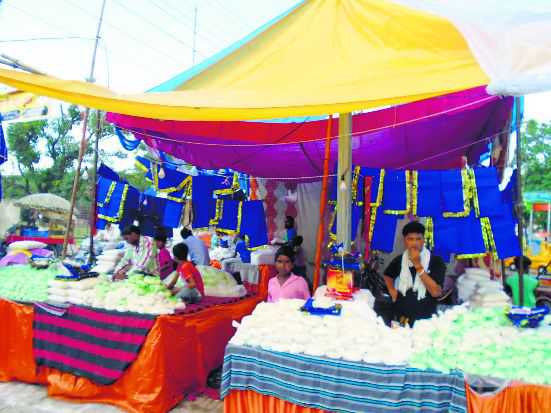Virender Singh Dhillon
Radaur, a small town of colonial antiquity situated 15 km from Yamunanagar district headquarters, is connected to the revelation of snake deity ‘Gugga Pir’. Every year in September, a ‘Gugga Pir’ mela is organised in the town by the descendants of saint Jeeta Bhagat to seek the blessings of the ‘Pir’. It is believed that Jeeta Bhagat visualised the ‘sawari’ of ‘Gugga Pir’ at the place where the shrine of ‘Gugga Pir’ is located in Radaur. When he reeled off that story to local people, a ‘Baniya’ helped him to build a shrine of ‘Gugga Pir’ at the town, which is revered till date, says Somnath, brother of caretaker of the shrine Babu Ram. A number of villages in Yamunanagar district have such small square shrines, with minarets at each corner, sacred to ‘Gugga Pir’. People too believe that a ‘smaddhi’ of a saint at Sagadi village in Yamunanagar is bestowed with powers to cure a patient of snakebite.
‘Gugga Pir’ is a revered deity in rural areas of Rajasthan, Haryana, Punjab, Uttar Pradesh, Himachal Pradesh, Delhi, Uttarakhand, Bihar, and Chhattisgarh. In the month of ‘Shravana’ (rainy season) after ‘Krishna Asthami’ falls ‘Gugga Naumi’ (birth festival of the deity) and bucolic people from north Indian states start a pilgrimage to Guggamedi village in Hanumangarh district of Rajasthan. ‘Garaudas’ (snake charmers and snake poison suckers) carry the ‘Chhadi’ (Nishan) of ‘Gugga Pir’ to Guggamedi village from their villages. These ‘Garaudas’ are bestowed with powers to cure snakebite victims with the ‘Garaud mantra’ and a branch of a ‘neem’ tree.
The parables associated with ‘Gugga Pir’ have four imperative stories; each related to one phase of his life — birth, marriage, death and his revelation after death. According to the legend portrayed in the Imperial Gazetteer, ‘Gugga’, while still in the womb, told his mother to apply 'neem' leaves to snakebites suffered by the oxen drawing the cart on which she was travelling to her parental house after her husband turned her out. She did so and the oxen recovered. ‘Gugga’ even from the cradle became famous as a snake killer.
There is an entrancing legend linked to the marriage of 'Gugga Pir'. Two other folklores, one associated with his death and the second interrelated to his revelation after death are also intriguing. Of his death it is said that he quarrelled with his cousins and killed them, and then when his mother uttered a curse upon him he disappeared underground. He reappeared to his wife in answer to her prayers, and this myth was prevalent in the colonial times that he appeared at Guggamedi village in Hanumangarh district of Rajasthan, but upon being observed by his mother he again disappeared never to return. Another tale deems that he becomes visible at three places: Gugahaal (Saharanpur, Uttar Pradesh), Amupur (Karnal) and Radaur (Yamunanagar). Since then these places are revered and melas are organised after ‘Gugga Naumi’ in September every year.
The mela has a special significance for the rural people of the Bavani — 52 villages near Radaur, who pay obeisance at the shrine of ‘Gugga Pir’ during the week-long fair. Villagers flock to the shrine and register for the Nishan/ Chhadi ceremony, which starts from the house of the devotee who registers and concludes at the shrine with accompanists who bring the Nishan/ Chhadi of ‘Gugga Pir’ with accoutrements. During the week-long festival, people enjoy joy rides at various swings, enjoy sweets and other delicious foods, and procure toys and household articles from shops. Intrepid motorists and acrobats thrill people by their skills and madcap shows. Such a mela not only offers psychosomatic solidity through a spiritual connect but also provides necessary economic means to people who trade there.
(The writer teaches history at Maharaja Agrasen College, Jagadhri)
Unlock Exclusive Insights with The Tribune Premium
Take your experience further with Premium access.
Thought-provoking Opinions, Expert Analysis, In-depth Insights and other Member Only Benefits
Already a Member? Sign In Now











